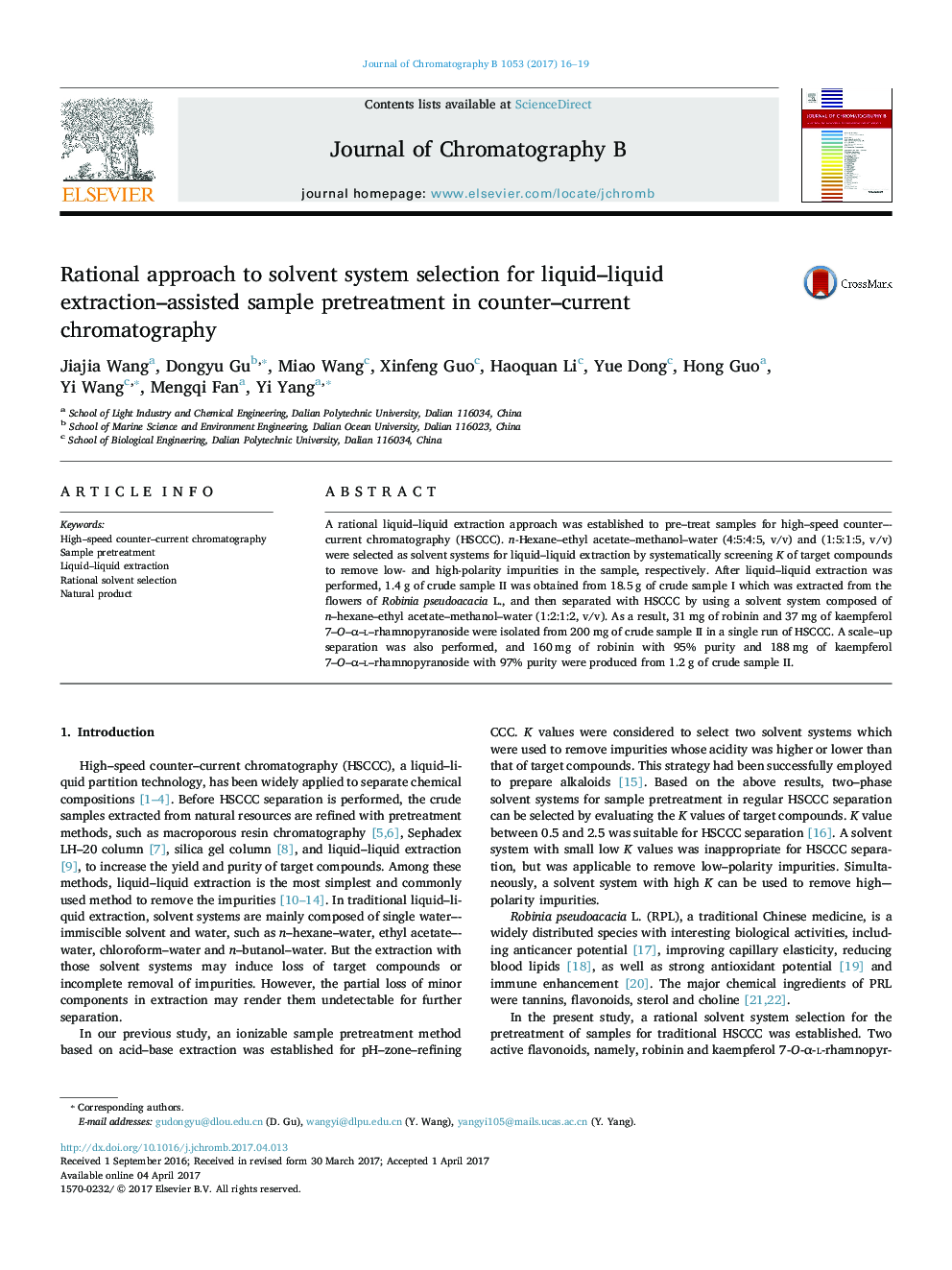| کد مقاله | کد نشریه | سال انتشار | مقاله انگلیسی | نسخه تمام متن |
|---|---|---|---|---|
| 5136349 | 1494009 | 2017 | 4 صفحه PDF | دانلود رایگان |

- A rational method to solvent selection for liquid-liquid extraction was established.
- The solvent selection based on K values of target compounds.
- The impurities can be removed with the lowest loss rates of target compounds.
- The separation of two target flavonoids from the extract was presented as an example.
- The present method was efficiency to raise yields of HSCCC separation.
A rational liquid-liquid extraction approach was established to pre-treat samples for high-speed counter-current chromatography (HSCCC). n-Hexane-ethyl acetate-methanol-water (4:5:4:5, v/v) and (1:5:1:5, v/v) were selected as solvent systems for liquid-liquid extraction by systematically screening K of target compounds to remove low- and high-polarity impurities in the sample, respectively. After liquid-liquid extraction was performed, 1.4 g of crude sample II was obtained from 18.5 g of crude sample I which was extracted from the flowers of Robinia pseudoacacia L., and then separated with HSCCC by using a solvent system composed of n-hexane-ethyl acetate-methanol-water (1:2:1:2, v/v). As a result, 31 mg of robinin and 37 mg of kaempferol 7-O-α-l-rhamnopyranoside were isolated from 200 mg of crude sample II in a single run of HSCCC. A scale-up separation was also performed, and 160 mg of robinin with 95% purity and 188 mg of kaempferol 7-O-α-l-rhamnopyranoside with 97% purity were produced from 1.2 g of crude sample II.
Journal: Journal of Chromatography B - Volume 1053, 15 May 2017, Pages 16-19